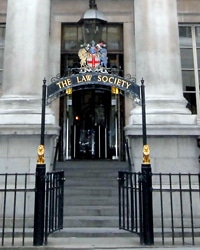Solicitors Regulation Authority (SRA) plans to issue guidance on the financial penalties it will impose on alternative business structures (ABSs) and those working in them are premature, the Law Society has claimed.
In January the SRA launched a consultation on a three-step approach to fining. This would involve first assigning a ‘score’ to the conduct in question according to its seriousness, in order to determine which penalty bracket it falls into.
Secondly, discounts to the penalty would be applied to take account of mitigating factors; and thirdly a check would ensure the penalty has removed any profit or gain arising as a result of the conduct.
In a highly critical response that attacked the reasoning behind many of the proposals, the Law Society said that given the SRA’s “lack of experience” in regulating ABSs, “we believe such guidance is premature… [This] means the SRA has little to base its guidance on”.
It added that the guidance focused on imposing fines on entities rather than individuals. “However, the SRA’s approach to entity regulation is unclear. In many cases only individuals are pursued, in a smaller number of cases both the individuals and the firm are pursued.
“This guidance is predicated on the SRA moving towards entity-based regulation but on the available evidence the SRA is not operating a clear and consistent policy in this respect.
It also expressed surprise at the lack of consultation with the Solicitors Disciplinary Tribunal, given its role as the appeal body.
Meanwhile, the SRA is to examine the effects on clients when it closes down a firm as part of an intervention.
The research, led by University College London trio Dr Nigel Balmer, Professor Pascoe Pleasence and Professor Richard Moorhead will look at what happens next for clients of intervened firms, what the SRA can learn from clients’ experience of intervention, and whether there are any differences in the experiences of different ‘groups’ of clients from an equality and diversity perspective.
Finally, the SRA is seeking views from the compliance officer community on a new element to the methodology it uses to risk assess firms.
The SRA’s risk centre is looking to introduce a new element of severity to sit alongside the current impact and probability components of risk assessment. This would help the SRA identify those risks that are greater than others.
At present, level 1 risks in the SRA’s risk index are not weighted or prioritised. By proposing to allocate a severity score to each risk, the SRA acknowledges some risks inherently have more potential than others to harm the regulatory objectives.















Leave a Comment